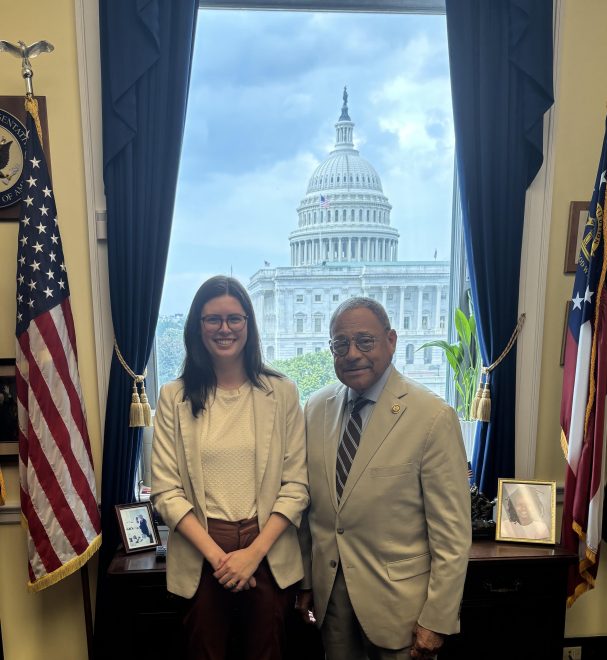Public Employers: Hospitals, schools play major economic role in their communities
Published 10:00 am Sunday, June 10, 2018

- Affinity Clinic, which Tift Regional Health Systems acquired in 2009.
TIFTON — Annsley Mathis and Whitney Chung got into nursing for similar reasons.
For Mathis, it was simple: she liked taking care of people.
Trending
For Chung, it was watching her grandmother deal with Parkinson’s while living at a nursing home.
“I saw my grandmother deteriorate and people not care for her,” Chung said. “From a young age, I thought I’d never let that happen to somebody’s family member. That kind of pushed me to become a nurse.”
Mathis started at Tift Regional Medical Center in 2015, in the Intensive Care Unit, where she still works today.
One of about 700 nurses employed at TRMC, she is in charge of only one or two patients at a time.
The job can be a kind of balancing act, with Mathis monitoring medicine levels, vitals, organs that are in failure, medicines that could stress the kidneys.
One 12-hour shift can find her working with two patients.
Trending
Another 12-hour shift, she may stay at the bedside of one patient the whole time, switching out medicines, administering blood.
Chung has worked with surgery patients since she started in 2012.
“My patients are a lot less critical,” Chung said. “I can have five or six patients I’m taking care of that are relatively stable.”
Besides nurses such as Mathis and Chung, TRMC employs 93 physicians, 81 advanced practice providers, which includes physician assistants, nurse practitioners and certified registered nurse anesthetists, 636 other clinical personnel and 745 non-clinical personnel.
The Tift Regional Health System, under the direction of the Hospital Authority of Tift County, is Tift County’s largest employer. The next largest is the Tift County Board of Education,
The hospital, which has an economic impact to Tift County of $551 million a year, is publicly owned by the Tift County Hospital Authority. Members of the nine-person board are appointed by the Tift County Board of Commissioners.
For some, thinking of a hospital as the largest business inside a city can seem strange, but across the SunLight Project’s coverage area, which includes Tifton, Valdosta, Milledgeville, Moultrie, Dalton and Thomasville, Ga., publicly controlled enterprises such as hospitals, schools, colleges and military bases are some of the top five largest employers in each city.
They not only provide essential public services such as education, health care and security, but are crucial in attracting other businesses to the community. When a new business is considering moving to a city, it looks for good hospitals and good schools.
In other words, public employers not only employ the most people, they incubate the creation of more jobs by providing essential public services.
For Mathis and Chung, at TRMC, their public service means working with patients and their families on a regular basis.
They have multiple roles to play: the role of navigator for families of patients, guiding them through what’s going on, communicating everything to them; the role of counselor for emotional and grieving families; the role of teacher, talking families through the care the patient will need after release.
They care for the families, in much the same way they care for the patient.
Some shifts are quiet, though it’s an understood rule they never say that out loud during the shift.
And then some shifts, they have to drop everything they’re doing and run.
Mathis said she still remembers her first code call.
“It was overwhelming, the first couple,” Mathis said. “When you hear a code call, your heart drops into your stomach. You take off running. There’s a lot of emotions, a lot of things you’ve never felt before.”
A code call or a patient going code refers to a patient who either can’t breathe or whose heart has stopped — or both.
It’s an all-hands-on-deck situation, with doctors, nurses and other personnel racing to tend to the patient.
In these life-or-death situations, someone has to keep an eye on the time, literally using a timer.
This is the role Chung prefers when the code call goes out.
For example, there can be two medications that need to be administered, with a three-minute window between them.
If the second medication is given too soon or too late, it can be dangerous.
And just like a medical emergency can be emotional for the family, it can be emotional for the medical team.
“Nobody sees that part,” Chung said. “They don’t see the emotional toll or the stress or what goes on.”
Generally a shift will see one or two code calls a day, though that number can go up in the extreme weather of summer and winter.
Every day brings different patients with different diagnoses, different problems.
“Every day is different,” said Chung.
TRHS President/CEO Christopher Dorman says the same.
“The really interesting thing about my job is it’s never the same day,” said Dorman. “Every day, it’s something different, and sometimes every hour it’s something different.
“Sometimes I’m in meetings, sometimes I’m making rounds on the floor with nurses. It varies every day. One day I might be the CEO, the next day I might be the phlebotomist, the next day the janitor.”
The majority of Dorman’s workday is spent in meetings: meeting with doctors, nurses and other staff, meeting with other hospitals and medical organizations, meeting with project managers and planners, looking at where the hospital and overall health system are and where they want to be in the future — juggling and monitoring all the different components and vitals of the system as a whole.
“It sometimes becomes a little bit challenging,” said Dorman. “But at the same time I focus on our mission and that collectively we can impact patients broader than we can individually. So I can deal with the meetings.”
Not that they can’t wear on you after a while.
“When people go into healthcare, there’s a reason for that,” said Dorman. “We like taking care of people. When you’re in meetings all day, sometimes you become removed. You become so involved on the higher admin level you’re becoming separated from those patients.”
Dorman got certified as a phlebotomist when he was 16 and working for a local doctor in North Carolina. Some days, when he has time, he goes down to the main floor and puts in time as a phlebotomist, drawing blood and sending it on to the lab.
“It’s very rewarding to be in the middle of patient care,” he said. “As CEO, you feel like you’re almost removed from patient care. And while there’s not much clinically I can do, those small tasks I can do to help the team are rewarding. And it helps me, it gives me an opportunity to learn first-hand what our front line folks are experiencing.”
On top of the emotional stress, nurses such as Chung and Mathis have to be well educated and trained to keep up with the daily demands. Those demands are on the increase as the need for nurses is expected to increase as many in the field are reaching retirement age.
In less than a decade, the nursing force at Colquitt Regional Medical Center is expected to shrink. And it’s not just that loss, as additional physicians come into Moultrie the demand for nurses will increase.
The hospital, Colquitt County’s second-largest public employer, has reached full capacity and, this year, hired a couple-dozen or so new physicians.
A recent study indicates “66 percent of our nurses will be out of the workforce in eight years,” said Jim Matney, Colquitt Regional’s chief executive officer.
“In the next five years we’ll bring on 35 new doctors,” Matney said. “Each physician we recruit creates 12 to 14 new jobs.”
With a new Philadelphia College of Medicine campus scheduled to open in August 2019, a short distance from the hospital, more newly minted interns will be working in the area.
The idea is that some – or hopefully most – will stay in the region to set up a practice.
The students who do residencies in the region could work in Moultrie or Albany, Thomasville, Tifton, Valdosta and other communities.
The average wage for Colquitt Regional is $25 per hour, or about $50,000 per year, Matney said.
Of job providers among public employers, the hospital is only eclipsed by the Colquitt County School System, which has some 1,500 employees.
The third-largest Colquitt employer is the Southwest Georgia Community Action Council. Its 600 employees serve the down-on-their-luck and people who are less fortunate throughout the region. It operates Head Start centers throughout the area.
Rounding out the top five are the governments of Colquitt County with about 250 employees, and Moultrie with 200.
Being in second place is not so bad, Matney said.
He predicted a job bump at Colquitt County High School and Southern Regional Technical College to provide the science and practical education needed for students pursuing medical careers.
“I would imagine in our efforts we’ll see both of them adding jobs,” Matney said of the high school and hospital. “… The school system is going to need to grow as well.”
A strong education system can have a huge impact on a region, said John Crawford, vice president for Valdosta State University advancement.
VSU is the fourth largest employer in Valdosta with 2,311 employees. Beyond just the number of employees, the college recognizes the key role its professors and staff can provide to the community.
“One of the issues in our region is economic development,” Crawford said. “Well, we have a college of business with experts. Those experts can be used as a resource. The idea is that we can go into the community and research these challenges and find a set of solutions that we can present to the community to make the lives of South Georgians better.”
VSU can’t help but influence the city and community, as it exists as a small town inside the city.
Crawford grew up in a small town and said the VSU campus reminds him a lot of his hometown.
“We’ve got about 11,000 students, plus our 1,500 employees on campus. That’s larger than many of the towns in Georgia,” Crawford said. “We have our own police force. We have an economic impact through payroll but also through the money our students pay into the community.”
He said he hopes businesses realize how VSU positively affects them. Visits to offices throughout the community demonstrate the impact of VSU.
Many workers either went to VSU for their bachelor’s degrees or enrolled to further their education. VSU degrees hang on walls all across the city and county.
The college also raises the quality of life for those living in Valdosta, Crawford said. Organizations such as the Valdosta Symphony Orchestra, Peach State Summer Theatre, the athletic program and the art gallery are unavailable in other South Georgia areas.
“Not only does VSU workforce bring dollars to our community, we bring diversity of thought,” Crawford said. “I think that’s really important for a rural area of Georgia. We have a really good diversity of ideas. That is a natural by-product of the university.”
This is the first part of a two part series looking into the the top five public employers. The second part will be published June 13.
The SunLight Project team of journalists contributing to this report includes Stuart Taylor, Alan Mauldin, Thomas Lynn, Will Woolever, Charles Oliver and Patti Dozier. The SunLight project is overseen and edited by Dean Poling and Jim Zachary.
Tift County Public Employment
• Tift Regional Health System: 2,329.
• Tift County Board of
Education: 1,100 —1,200.
•UGA Tifton/Coastal Plain Experiment
Station: 430.
• Abraham Baldwin Agricultural College: 410.
• Tift County: 330.





